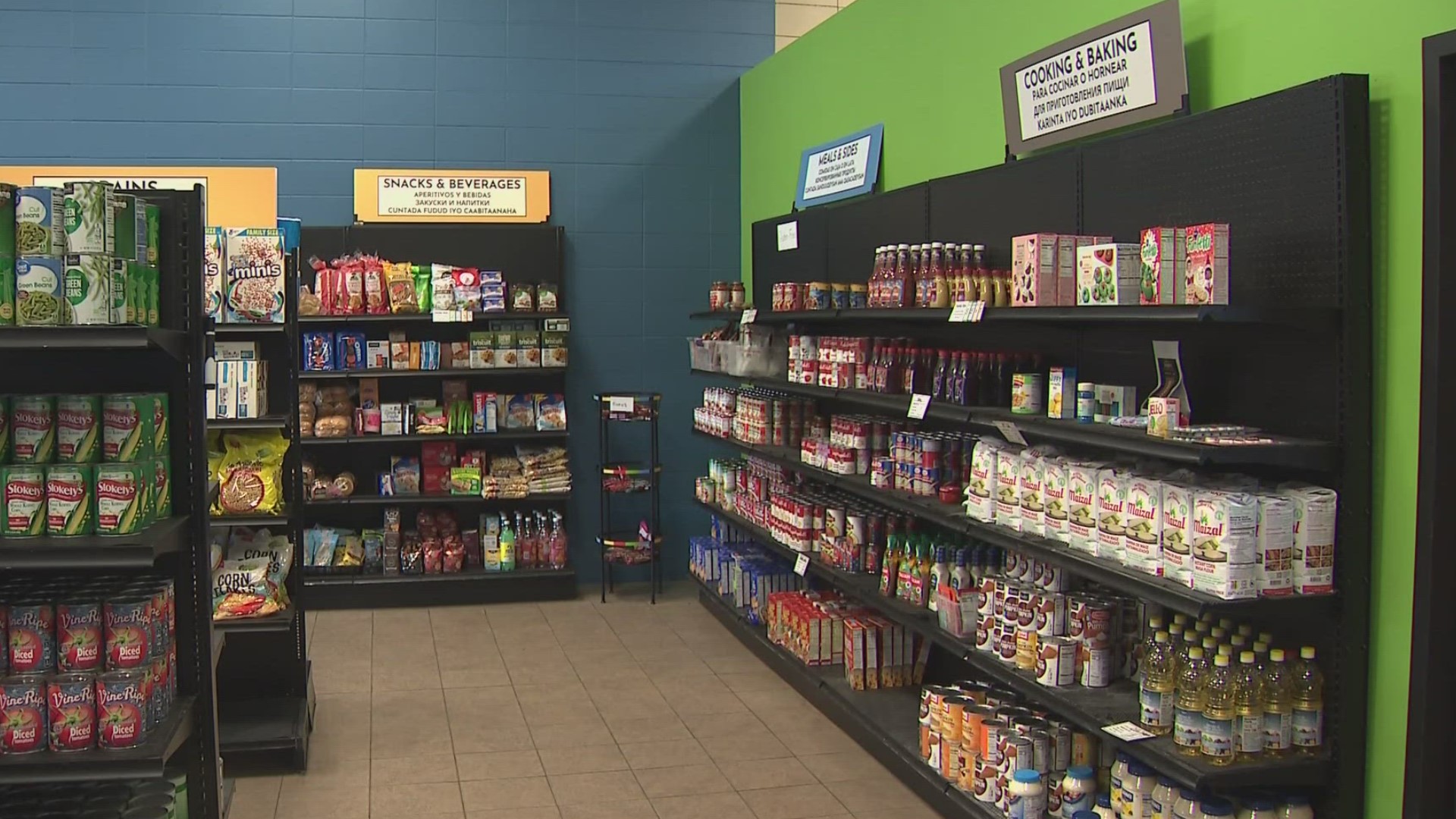MINNESOTA, USA — The number of Minnesotans getting help from food shelves is at a record high, according to Hunger Solutions Minnesota.
The group that tracks hunger trends released new data on Wednesday showing more than 7.5 million food shelf visits in 2023, a 32% increase from 2022.
Hunger Solutions Minnesota Executive Director Colleen Moriarty said inflation, the end of COVID-19 relief funds and stagnant wages are also putting a pinch on food shelf budgets.
"My first reaction is, of course, a protective one," said Moriarty. "How are the shelves going to continue to meet the needs?"
For 15 years, Bountiful Basket Food Shelf has served Carver County, including Chaska. Its executive director, Patti Sinykin, says it experienced unprecedented demand in 2023.
"We're seeing teachers, doctors, paraprofessionals, construction workers, line workers, whoever, and I can't tell you how many people say, I just got back from my second job and I'm glad that I'm here," said Sinykin.
The food shelf helped about 5,604 people in 2023, nearly double from the year before when it served 2,946. There's little to no requirement needed to access the help there.
"We do our very best, really, to be welcoming to everybody," said Sinykin.
That includes transforming the space to make it more shopper-friendly from the layout to more culturally appropriate food and signage in multiple languages. Sinykin also said there's a focus on putting health and wellness first.
"We might be seeing a new normal of people who literally can't make it through the month without visiting a food shelf," said Moriarty. "We keep trying to really leverage every resource we can to be able to get that to people."
There are about 400 food shelves in Minnesota. The resource took off in the 1980s and was considered a temporary solution back then, but not anymore.
"It can fill a basic need and we want it to reduce barriers and make it easy for people to receive the food assistance," said Sinykin.
Bountiful Basket buys about half of its food from local wholesaler, Second Harvest Heartland. The rest is rescued from local grocery stores and collected during community food drives. But Sinykin says she will have to buy certain items from the grocery store to supplement certain needs.
"Our food budget is up like anybody else, but I'm telling you, as quickly as it comes in, it is out," said Sinykin.
Experts think the numbers may start to go down later this year if inflation does and as more families benefit from the free school meals the legislature approved last year.
To find help near you or to call the Hunger Solutions Minnesota helpline, click here.
Watch more local news:
Watch the latest local news from the Twin Cities and across Minnesota in our YouTube playlist:

